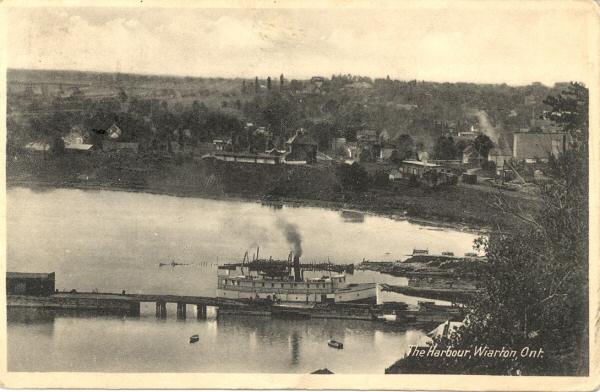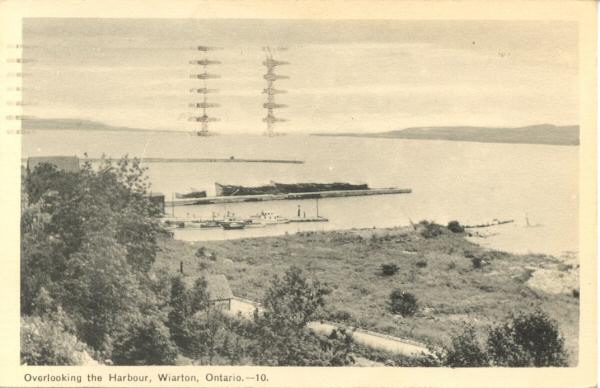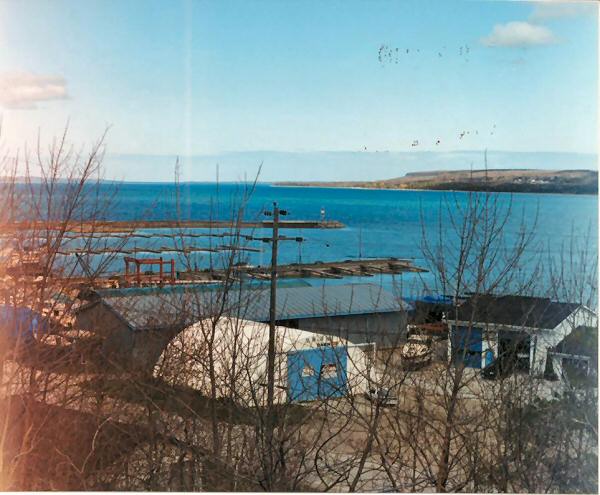- Recent Updates
- Colpoy's Bay
- Colpoy's Bay Introduction
- Spragge's Hill
- The Kalbfleisch House
- The Kalbfleisch Dock
- The Kalbfleisch Marina
- Whicher's Sawmill
- The Wrecks Near Whicher's Mill
- Frame's Falls and John Wood's Grist Mill
- Albemarle Street
- Hughenden and Whicher's Store
- The Community Hall
- The Forest Home Hotel
- The Colpoy's Bay Schoolhouse
- The Colpoy's Bay Church
- Edgehill Cemetery
- Colpoy's Bay From the Air
- A Glimpse of the Past
- Wiarton
- Berford Street
- Berford St. Part 2
- Berford St. Part 3
- Wiarton Harbour
- Bluewater Beach
- Caframo Ltd. and Wiarton Cement Works
- Wiarton Beet Sugar Factory
- Wiarton's Hotels
- Wiarton's Schools
- Wiarton's Banks
- Grand Trunk Railway Station
- The Wiarton Fish House
- The Wiarton Fish Hatchery
- Wiarton's Berford Theatre
- The Wiarton Woolen Mills
- Wiarton's Furniture Industry
- Wiarton's Hospital
- Wiarton's War Memorial
- Wiarton's Town Hall
- Wiarton's Newspapers
- Wiarton's Grist & Flour Mills
- Wiarton's Sawmill Industry
- Wiarton's Gateway
- Connecting Passages
(Links) - Present-day Map
of Colpoy's Bay - Colpoy's Bay
Lot Map (1870) 
Wiarton Timeline- Present-day Map
of Wiarton - Bibliography
- About the Author
- Site Map
(use if menu doesn't work) - Tell me your impressions!
Wiarton Harbour

Figure W4A: Wiarton harbour (c. 1930s).
The lumber and industrial origins of Wiarton are evident in Figure W4A. Note the lumber stacked on the main pier for shipping in cargo vessels like the steamer in the postcard. This segmented pier remains today, but is now lined on each side by pleasure vessels.

Figure W4B: Wiarton harbour around 1930.
Figure W4B offers a view taken from the wharf near where the ship is docked in the previous image. In both pictures, the ribs of a sunken breakwater barge are visible, protruding from the water just west of the wharf, where the sawmill of Gideon Kastner once stood. The large building at right in Figure W4B still stands today and has been long known as the "Anchor Inn".

Figure W4C: Easterly view of Wiarton harbour around 1940.
The ribs of the aforementioned barge are barely visible in Figure W4C. This image was taken from the hill out of Wiarton towards Colpoy's Bay village. The wharf is still stacked with lumber for shipment and dredging has allowed the construction of a smaller dock to the west for commercial and personal boats. Note also the kinked breakwater pier in the distance. This cement structure served to shield the harbour from the westerly waves off the bay.
In 1940, lumber was still a major trade in the area. However, by this time, some tree species indigenous to the area were completely wiped out by logging. By the 1950's the industry had slowed to a crawl.

Figure W4D: The same view in early 2000.
Today Wiarton harbour
is bustling with leisure vessels as opposed to commercial cargo ships.
Virtually all the empty groundspace in Figure W4C has been filled with
buildings housing the Wiarton Marina and yacht club. Figure W4D shows
the marina in 2000. The kinked breakwater pier and the main wharf
are still clearly visible. The white semi-cylindrical building in
this image is apparently in the process of being moved. It now stands on the ground in roughly that same position.

